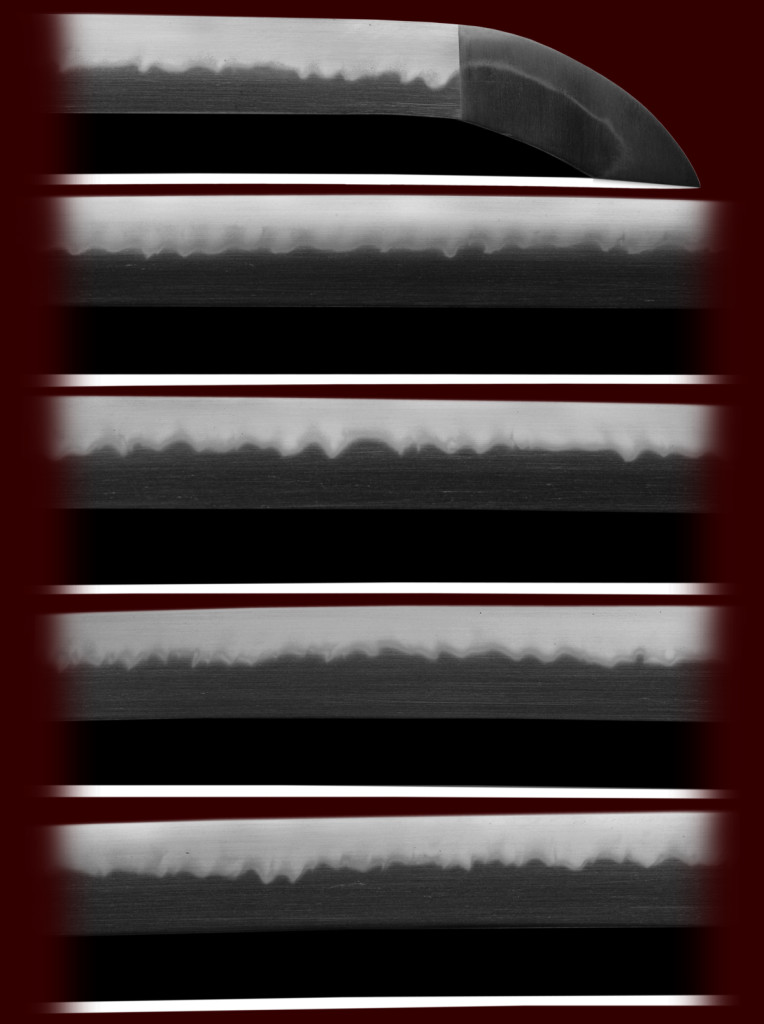From the “Japanese Sword Guide”
The presence of a STAR stamp on the nakago of a WW II era sword blade is an indicator of a blade made by swordsmiths of the Rikugun Jumei Tosho. To become Rikugun Jumei Tosho, a swordsmith had to pass tests and examination of his blades. Once accepted as an Army Certified Swordsmith (Rikugun Jumei Tosho), the smith was given a regular allocation of tamehagane with which to make sword blades. Jumei Tosho smiths also made blades using non-traditional materials, mainly forged mill steel. Blades with star stamps and which show nie in the yakiba are considered by some collectors to be gendaito; whereas other stamps were indicative of blades made by non-traditional methods and are therefore not gendaito. It is still hotly debated as to whether all tang stamps indicate non-traditionally made blades or whether certain stamps such as the star stamp indicate blades made in the traditional manner. Some star stamped blades have received origami from the NBTHK. A complete list of Rikugun Jumei Tosho swordsmiths was published in Showa 17 entitled “Rikugun Jumei Tosho Meibo”. There were also Navy commissioned swordsmiths (Kaigun Toko), but little information is currently available on them.
Mei: Noshu Ju Kanetoshi
Date: Showa Jyu ku nen roku gatsu (june 1926)
Nagasa: 25 3/16 ”
Sori: 15.0mm
Width at the ha-machi: 33.4mm
Width at the yokote: 24.1mm
Thickness at the mune-machi: 6.1mm
Construction: shinogi zukuri
Mune: iori
Nakago: ubu
Kitae: ko itame
Hamon: midare
Boshi: maru
Condition: good older polish
For Sale
























